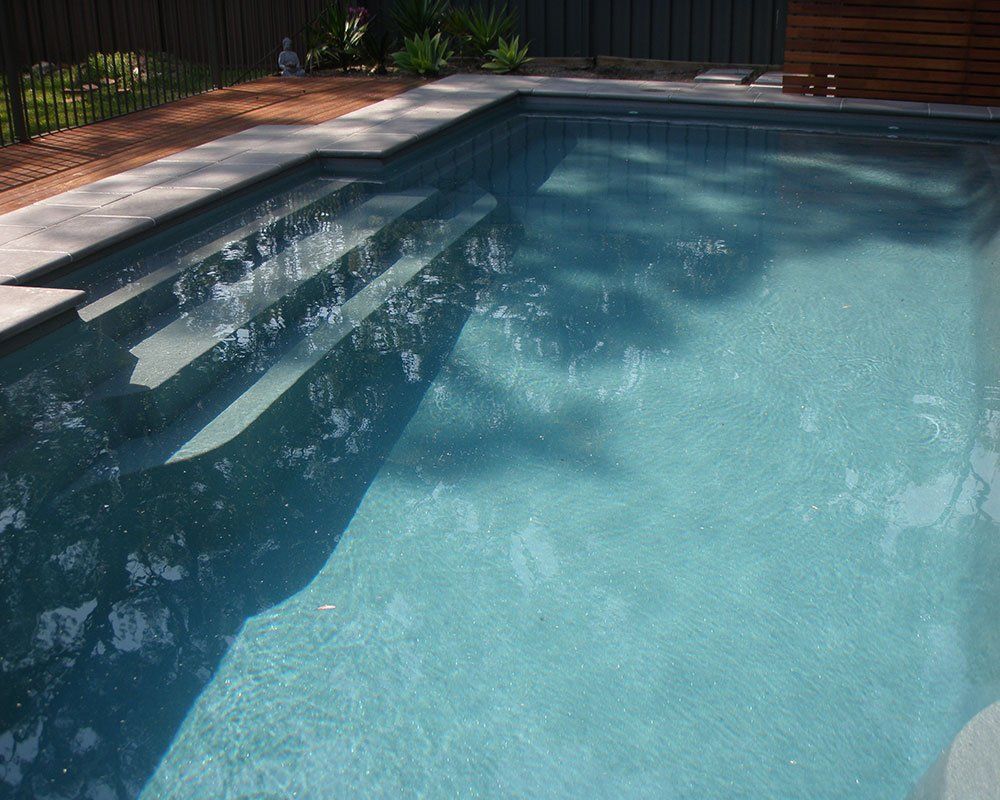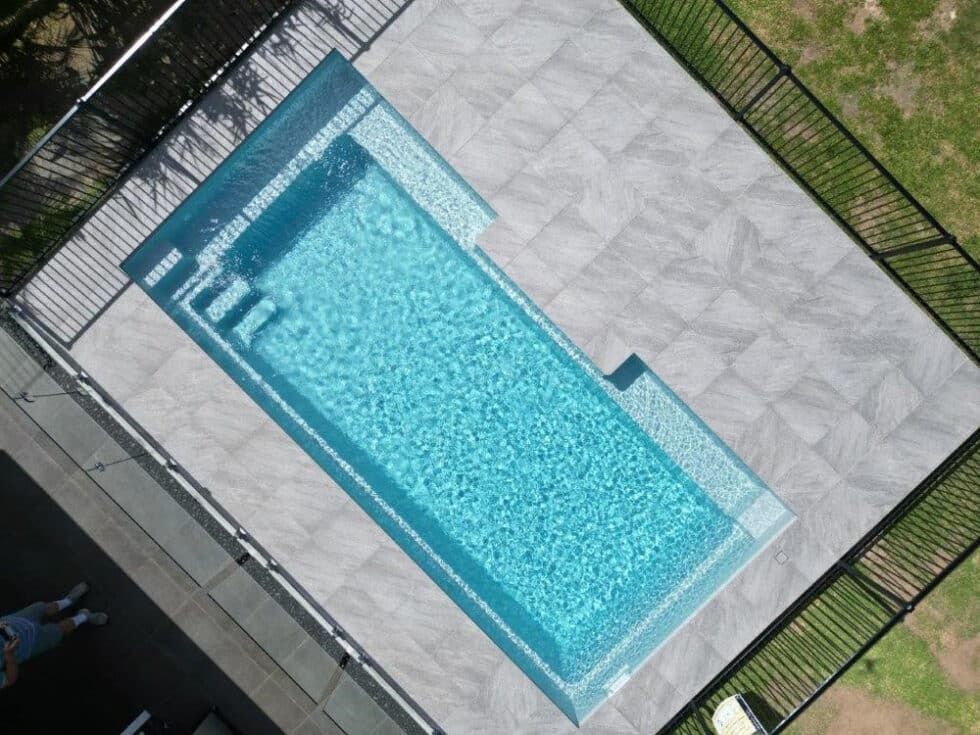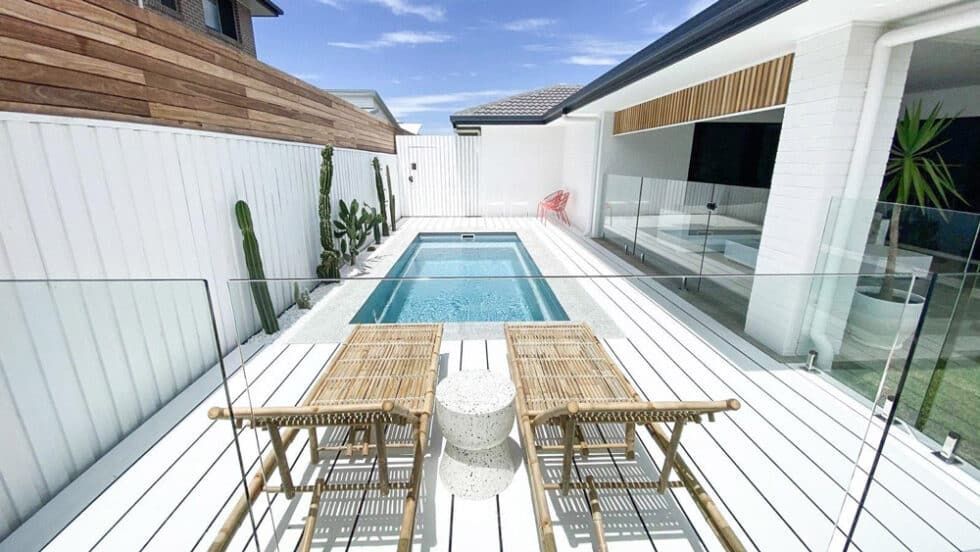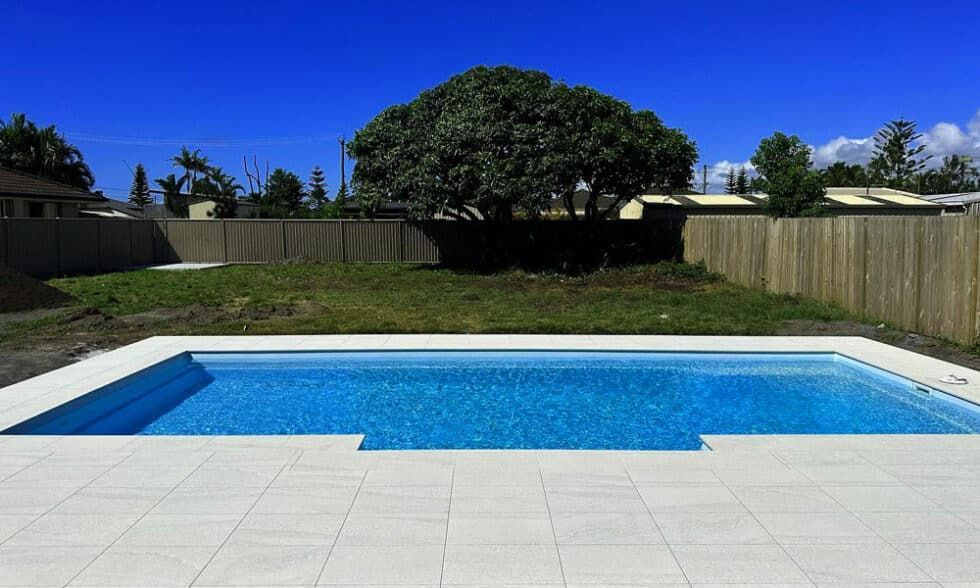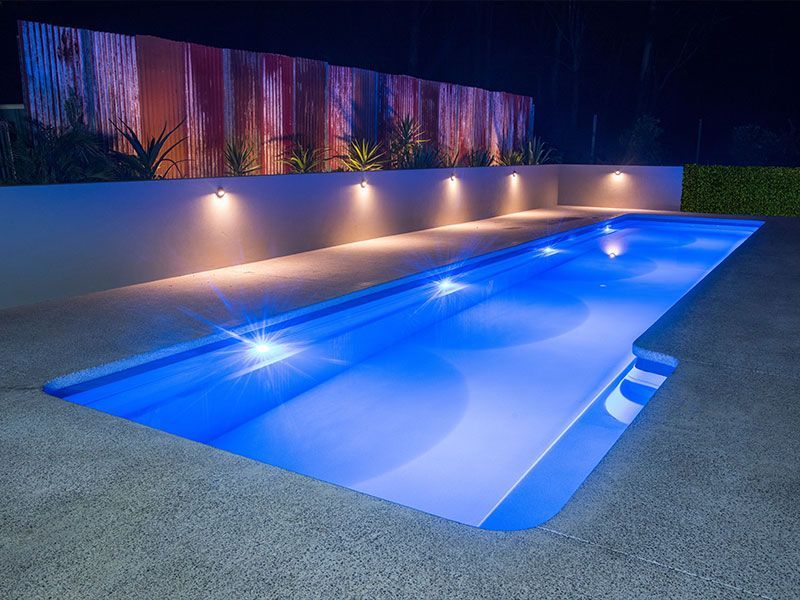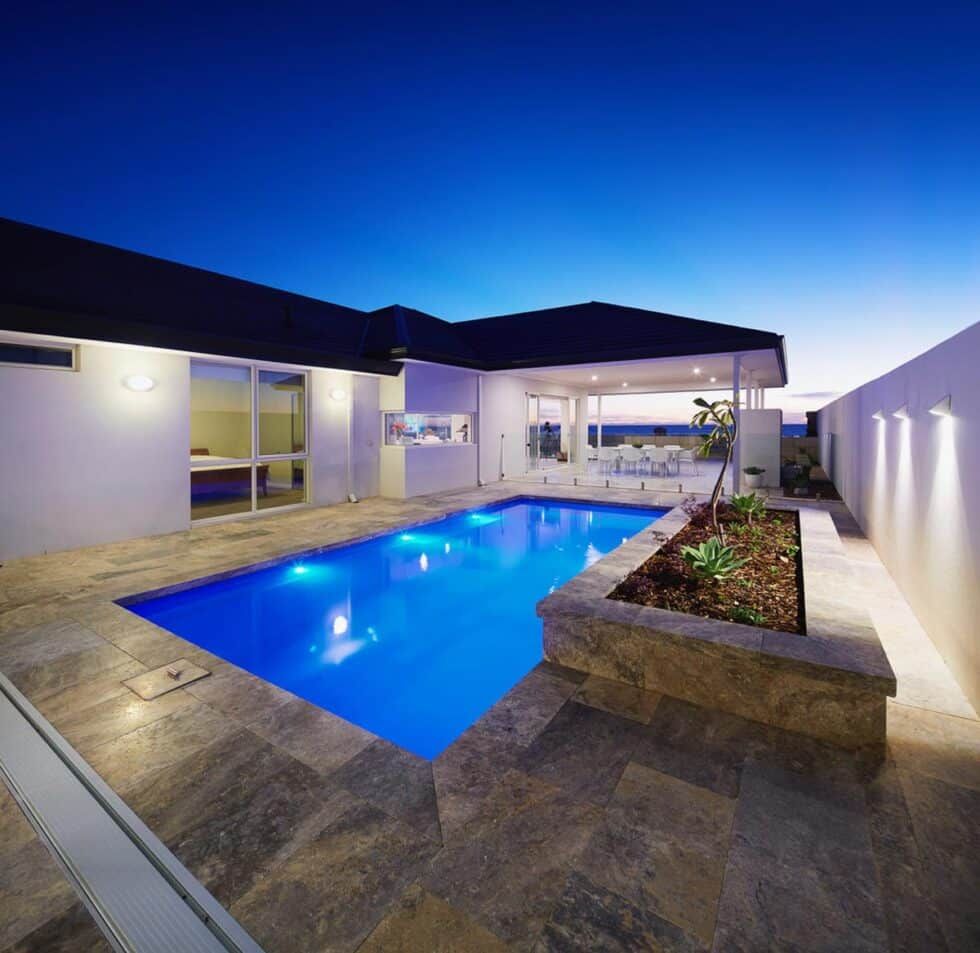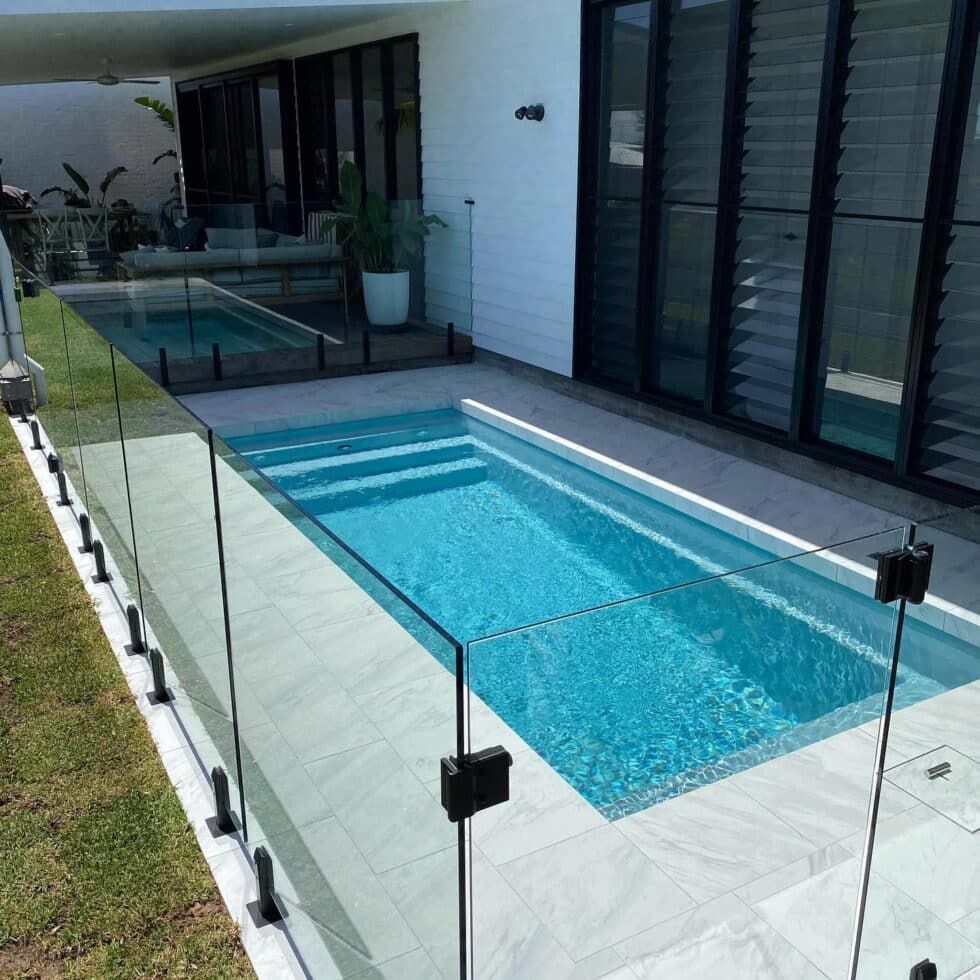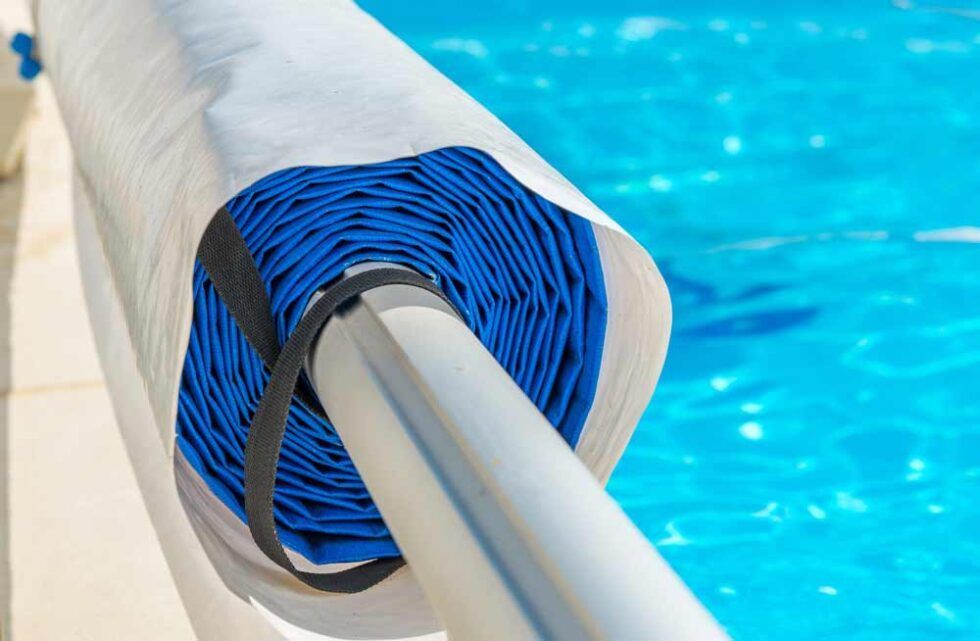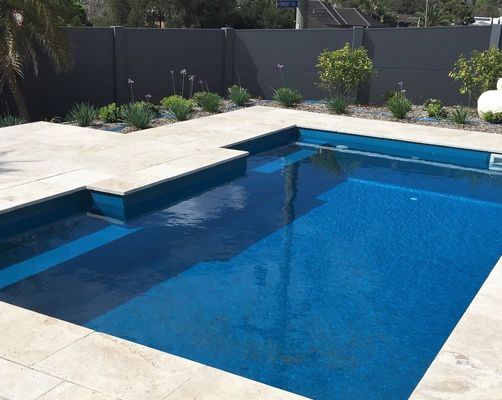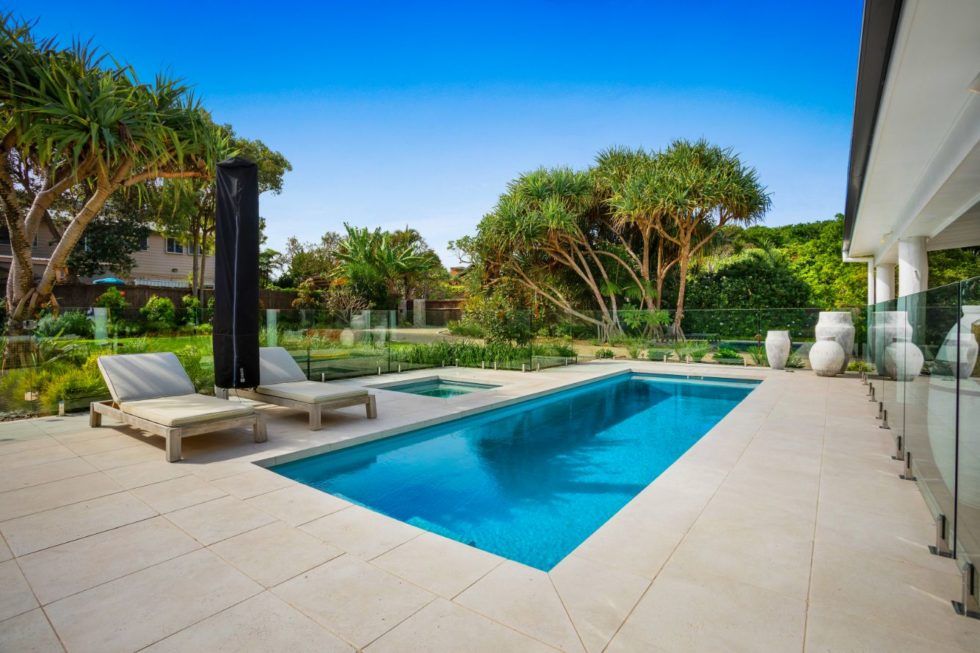Swimming Pool Choice: Fibreglass Vs. Concrete Pros and Cons
FIBREGLASS POOL VS. CONCRETE POOLS – PROS AND CONS

Swimming pools involve quite a lot of choice.
When you are in the process of turning your outdoor space into one designed for your lifestyle, a big choice is whether to go concrete or fibreglass. Dean & I have been installing swimming pools and providing turnkey landscape solutions for over 20 years – that’s over 1000 pools for 1000 families.
Here’s five things to think about when choosing between concrete and fibreglass swimming pools
To help your decision making process, here’s the top five frequently asked questions that Dean & I have been asked during our time as swimming pool installers.
Pool construction time
Pool temperature
Pool shape
Pool hygiene and bacteria
Pool cost
1. How long does it take to construct a concrete pool vs. a fibreglass pool?
Swimming pool decision making has a few stages to go through. After the contract is signed, and council approval has happened, the real fun begins. The installation phases involve preparing the site (digging the hole), installation of the pool shell, and landscaping the area. Some big things to think about include the impact of this time on your family. While time to dig a hole may be similar, it’s the next part of the process that takes time.
Swimming Pool Installation – Concrete pools take 3 months
Concrete have a drainage layer, floor cleaning pipes, steel frames and formworks, testing of plumbing and then spraying of concrete. This initial stage can take 4 weeks. After this initial structure, the concrete pool needs to cure for 4 weeks. Landscaping can commence during this stage, however there is still another 4 weeks to go including waterline tiling, commissioning and testing.
Swimming Pool Installation – Fibreglass Pool Installation take as little as 3 days
Fibreglass pools don’t need to cure. After the fibreglass pool shell is in the ground, there are a few days of settling.
Swimming Pool Construction and Impact on your Household
When it comes to pool construction time, family traffic between indoor and outdoor areas may play a role. Consider pets, children, and other family dynamics. A longer pool construction time can increase the impact on use between these areas, and if you are a busy household, it could mean more cleaning, or more time with highly energised members of your household having to stay in doors.
2. What’s the difference for Pool Temperature: Concrete vs Fibreglass Pools?
Concrete pools tend to be colder than fibreglass pools due to the porous nature of concrete. If your pool is going to be situated in a shaded area in your back yard that doesn’t get a lot of sun, and you are looking to swim in your pool all year round, the water temp will be much lower in concrete vs. the fibreglass option. As they are colder, if you are looking to heat your pool heating costs can end up being much higher.
3. Pool Shape: Concrete vs. Fibreglass
If you wanted a pool in the shape of a love heart, concrete will have you covered. Concrete does give you more flexibility on the shape front. The more complex the shape, the more complex the engineering calculations. Adding in safety ledges to concrete pools may prove a little trickier in the construction phase vs. fibreglass pools which have them already in the mould. If simplicity is more your style of pool, fibreglass pools have options including entertainer seats, safety steps for small children, or a longer, lap pool design if fitness is part of your life style. To see the range of fibreglass pools by size, click here
4. Concrete vs. Fibreglass Pools – Managing Pool Hygiene and Bacteria
Pool hygiene and bacteria management are all part of the maintenance costs for swimming pools. With concrete being porous, it can be a little trickier to maintain the chemical balance of a concrete pool. More chemicals are needed to get the chemical balance right Fibreglass swimming pools come with a gelcoat. The gelcoat in a fibreglass swimming pool limits bacteria growth. As fibreglass pools are non porous, it is easier to maintain the chemical balance. This helps in the ongoing maintenance cost of a pool. The use of water management systems also helps with taking the guess work out.
5. Concrete vs. Fibreglass Pools – Pool Cost Considerations
When looking at the total cost of the pool, there will be differing requirements for concrete pools vs. fibreglass pools. Concrete pools require structural engineers to be involved. Fibreglass pools require a crane. Concrete pools have a higher energy consumption on the heating front. Fibreglass pools cost less wise with using chemicals and salt to manage hygiene and bacteria. We recommend water management systems to assist with this process.
Which one should you choose – fibreglass or concrete?
The choice all comes down to your priorities and what matters to your family. Think about making a list of your priorities to help with your decision making. A list that includes the following items will help:
- time frame & impact on your family
- purchase cost
- installation costs
- ongoing running costs (include chemical maintenance costs, and heating costs),
- shape and style.
- support after the commissioning of your pool
It can be handy to give each one a weighting out of five (1 being not important, 5 being very important) to help guide the decision making, and help you ask your potential pool supplier some good questions. We’d love to know which of these points you have found most helpful. Feel free to leave a comment below, or contact Dean & I for more information by clicking here Happy swimming! Sally

